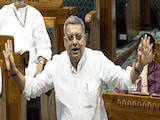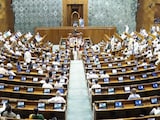In politics, things can change overnight, and five years is a long time. Sample this: the Rashtriya Janata Dal (RJD), led by Lalu Prasad Yadav, won 22 seats in the 2004 Lok Sabha elections and became an integral part of the Congress-led United Progressive Alliance (UPA) government. Five years later, they were reduced to just four seats in the Lok Sabha and 22 in the Assembly, courtesy of a spirited campaign led by Nitish Kumar.
As Bihar prepares for another election, one wonders if Nitish Kumar has it in him to recreate the 2010 magic.
On November 24, 2010, Nitish Kumar's JD(U), in alliance with the BJP, secured 206 of the 243 seats. This was up from 143 seats in 2005.
The RJD, already reeling under the Lok Sabha defeat, was relegated to the margins with just 22 in the seats column. This was despite Lalu's party contesting the polls in alliance with the Lok Janshakti Party (LJP).
Rabri Devi, a former Chief Minister and Opposition leader in the run-up to the polls that year, lost in both her constituencies. The influential Paswan family, too, faced defeat. Congress, attempting to make inroads under Rahul Gandhi, managed only four seats.
After Nitish Kumar's arrival at the helm in 2005 brought hope, the 2010 sweep delivered a clear mandate for governance-focused politics.
ALSO READ | When Bihar Had A Chief Minister Without A Functioning Cabinet
The 2010 campaign broke sharply from traditional identity politics. Nitish Kumar focused on development, accountability, and governance. He promised tangible improvements in roads, electricity, schools, and law enforcement, while engaging marginalised communities, including Mahadalits and backward castes. All this while maintaining the BJP's core support. The electorate noticed, and turnout hit record levels.
The results reshaped Bihar's political landscape. Nitish's administration prioritised "sushasan" or good governance. Infrastructure development became a key focus, with initiatives such as modernising roads and constructing flyovers in Patna to ease traffic and boost connectivity.
Economically, Bihar experienced growth, with the state's Gross State Domestic Product growing at a compound annual rate of 5.9 per cent between 2011-12 and 2021-22.
The win also initiated a new political dynamic. The JD(U)-BJP alliance, once formidable, began experiencing strains over the years, and the JD(U) gradually lost its dominant position within the coalition.
In 2014, Nitish Kumar left the NDA. Months later, he teamed up with Lalu Yadav and set aside years of rivalry to form the Mahagathbandhan, a grand alliance with the Congress, defeating the BJP in another electoral sweep, winning 178 of 243 assembly seats in 2015.
In 2017, following corruption charges against Deputy CM Tejashwi Yadav, Nitish Kumar quit and joined the BJP-led NDA. He stayed with the alliance through the 2019 general elections.
In 2022, he left the NDA again, citing the BJP's heavy-handed approach, and joined the opposition Grand Alliance. Ahead of the 2024 Lok Sabha elections, he returned to the NDA and took office as Chief Minister for the ninth time.















